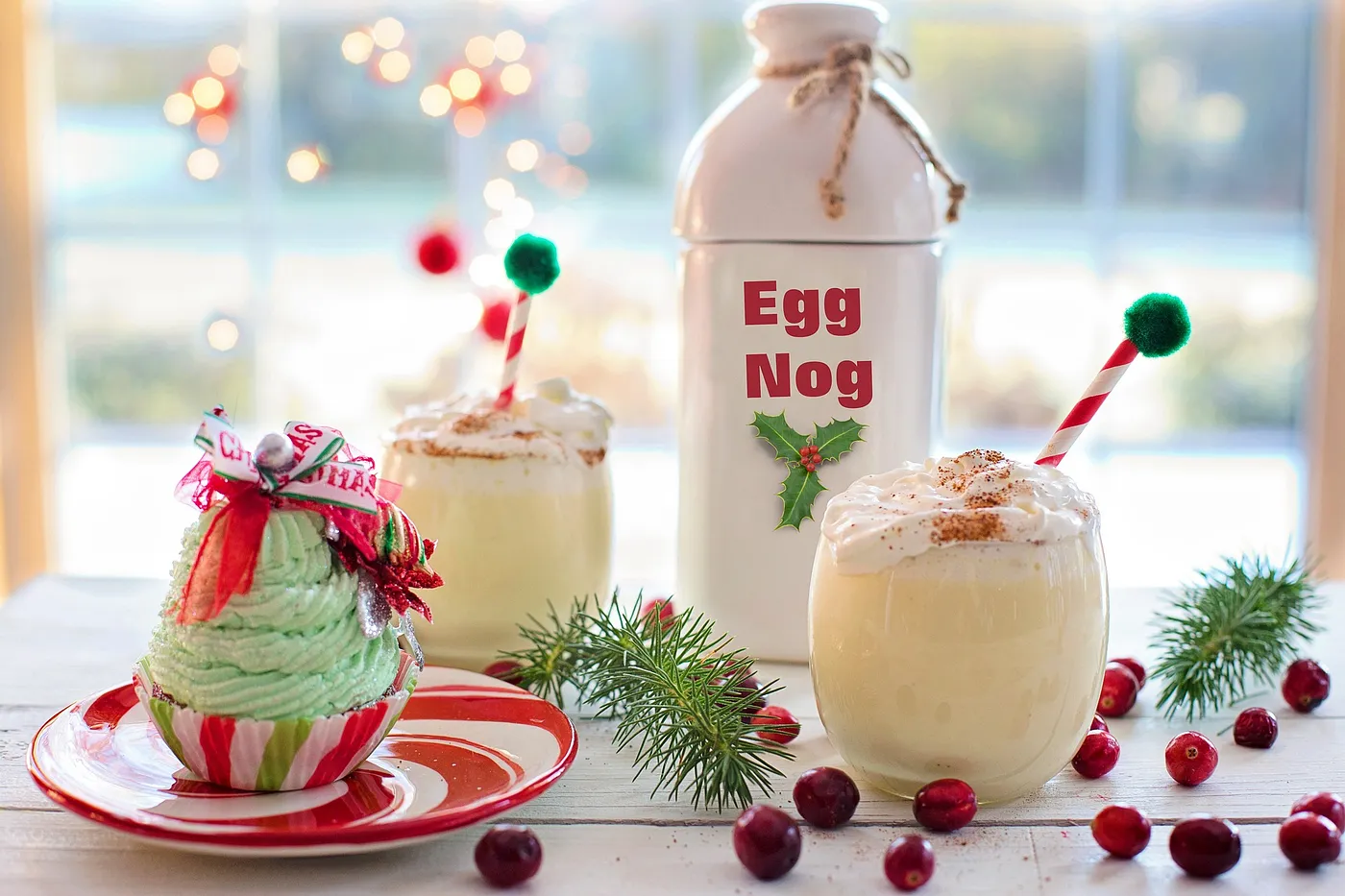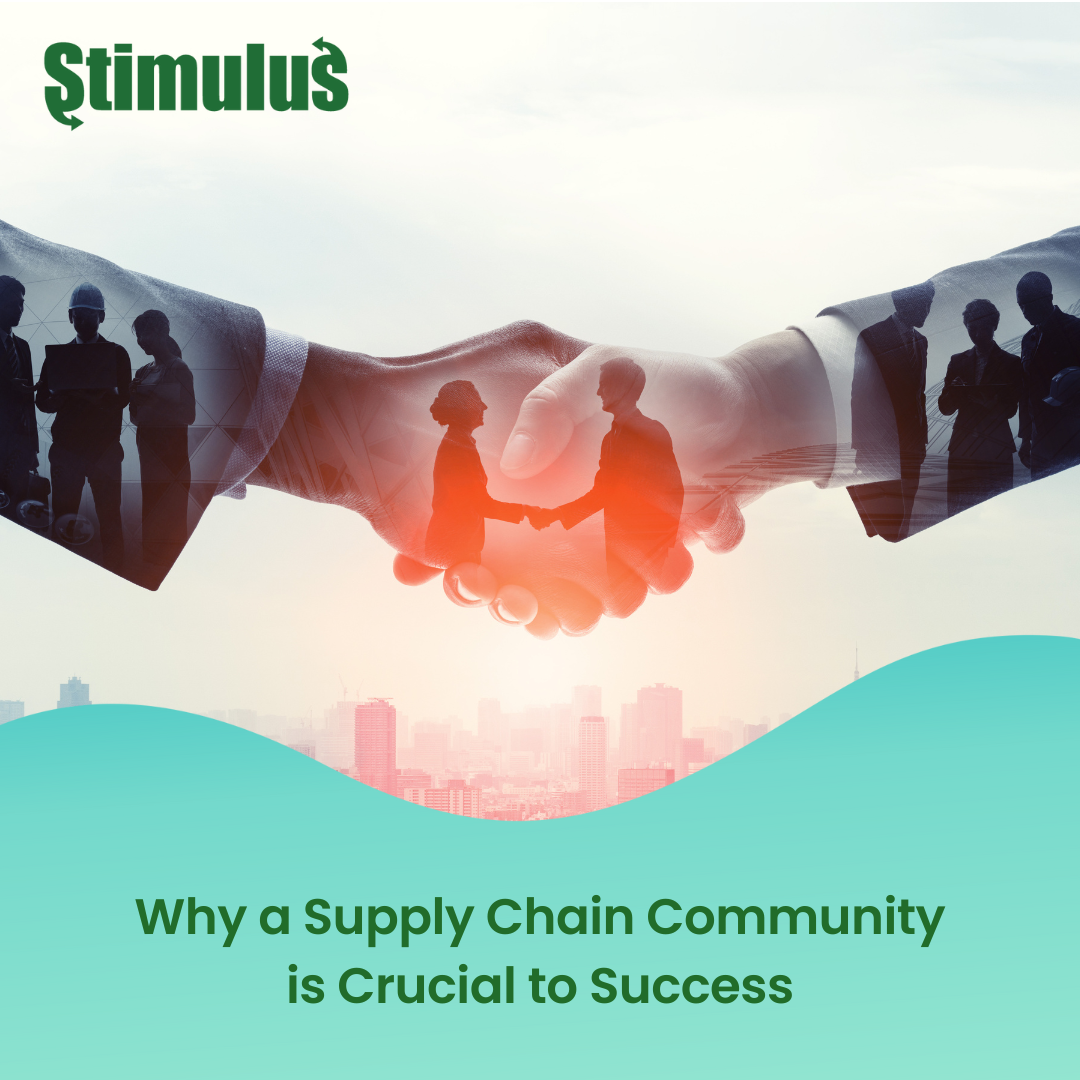Whether it’s boozy or simply passed around in its original iconic fashion, eggnog is the perfect drink for the holiday season. In fact, Americans consume over 135 million pounds of eggnog every year. Served in giant bowls at company parties or in festive mugs around the fire at home, this spiced and creamy drink is synonymous with the season — and for good reason! However, have you ever truly asked yourself how this festive addition is even made, whether or not egg is truly in the mix, and how so much of it can be found in each and every store across the nation during the last two months of the year?
As part of the new supply chain journey series by Stimulus, we’ve chosen to break down the entire journey of eggnog from farm to cup to show exactly the kind of festive holiday spirit that goes into every ounce of this sweet treat. Without further ado, let’s analyze this delightful chilled beverage and see what makes it so incredible below.
Eggnog’s Origins
Originally, eggnog was only made for wealthy aristocrats to drink on special occasions. However, this drink became popularized in America during the late 1700’s. In fact, kitchen records from Mount Vernon indicate George Washington served an eggnog-like drink to visitors. And since the general was a wealthy man, he didn’t skimp on the booze. Rum, sherry, Cognac, and whiskey are the most common mixers for eggnog but it is likely that the general opted for rum as rye whiskey and rum were his main drinks of choice.
In 1826, the Superintendent of West Point, Colonel Sylvanus Thayer, set strict rules forbidding the purchasing, storing, or consuming of alcohol. However, several cadets celebrated the holidays with alcohol-laden eggnog leading to a massive riot which injured many civilians and military personnel. This just goes to show eggnog’s deep history in America even further. However, to see how eggnog is made and delivered in the 21st century, let’s head to the farm — the real origin of eggnog.

On the Farm
The process of making and shipping eggnog all begins on the farm. Traditional eggnog is made up of a mixture of milk, cream, sugar, and eggs (both yolks and whipped egg whites). The milk, cream, and eggs come from farms across America while the sugar could come from all kinds of regions depending on the type being used. Most sugar comes from Brazil, India, Thailand, and China.
Vegan eggnog also exists and uses almond, coconut, and soy milk varieties instead of milk and eggs. However, for this supply chain journey, we’re going to stick with the old-fashioned traditional eggnog we all know and love.
Mixing the Ingredients
Once the ingredients have been sourced, the process of mixing each ingredient can begin. First, the milk is separated into skim milk and heavy cream. Next, the two components are mixed back together in the correct proportions. This is how the eggnog gets its creamy texture. Meanwhile, the thinner eggnog varieties are simply ones that mix more skim milk into each batch.
The eggs are then pasteurized and dried to prevent salmonella poisoning. Due to a fear of raw egg, U.S. FDA regulations limit egg yolk solids to no more than 1.0% of a products’ final weight to still bear the eggnog name but be a safer option for the public.
Lastly, liquid sugar is added to the mixture to make it nice and sweet. Some brands rely on brown sugar to give a deeper flavor to the eggnog while most brands stick with pure cane sugar and refined sugar.
Processing
Once the base mixture is finalized, it is frothed repeatedly to give it a light and creamy texture. Cinnamon, allspice, nutmeg, and other flavors are added last to the mixture in either powder or liquid extract form. Some more custom and high-end brands boil the eggnog with the spices to infuse them in a more traditional manner as well.
From there, each bottle is filled and the label is placed before caps are secured to prevent spoiling on shelves. This entire process is done on a factory assembly line and requires very little human interaction. However, the next step in the process is almost entirely dependent on a human touch.
Quality Control
With raw ingredients and pasteurization concerns, it makes sense why eggnog has a stringent quality control process. Each bottle is analyzed for its quality, taste, texture, and safety before being ready to sell.
The cap must be checked to ensure the drink doesn’t spoil in shipping and the flavor is checked to ensure that all the ingredients were added and taste correct. During this step, the pasteurization process of the milk is also tested one last time as unpasteurized dairy products can injure and even kill consumers.
Selling and Shipping
Most eggnog is created in America so the selling and shipping process is quite simple. Once suppliers and retailers have purchased the eggnog, it is shipped on massive refrigerated trucks nationwide.
The state that produces the most eggnog is Pennsylvania and the largest retailer that buys the most eggnog from suppliers and manufacturers is Walmart.
Suppliers also purchase the eggnog and distribute it to retailers in bulk. The eggnog is stored in refrigerated warehouses until it is ready to be shipped in trucks as well.

The Holiday Spirit is Here!
Once the process is complete, the eggnog is stored in dairy sections across Canada and America for the holiday season. While the most popular eggnog brands tend to stick with plastic and cardboard packaging, some use the old fashioned glass milk bottles that can be reused for all kinds of holiday crafts.
Now that you know how this delicious holiday drink comes to be, it’s time you grab yourself a glass and fill it with this spiced and creamy drink to celebrate the new year to come!
Stay tuned for more supply chain journeys to come, and feel free to watch the ‘Farm to bottle: how eggnog is made’ episode below to see some more of this journey in action:

.png)

.png)
.png)
